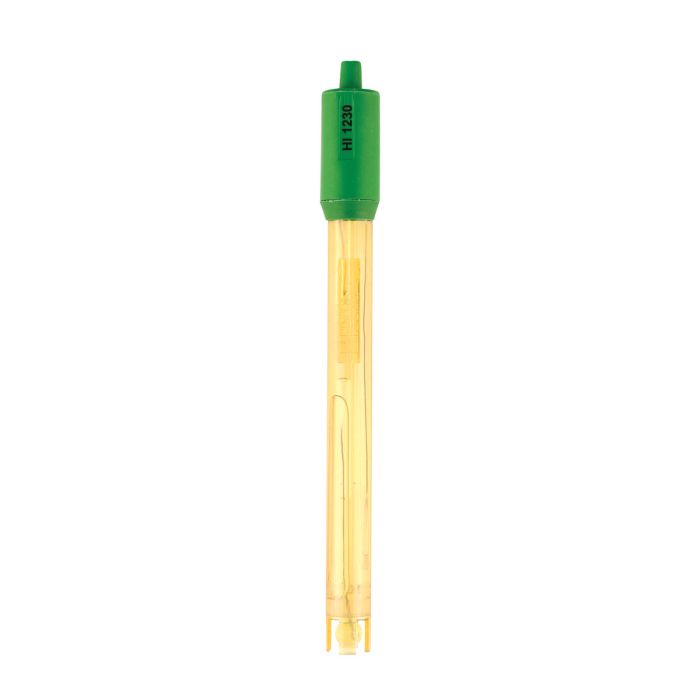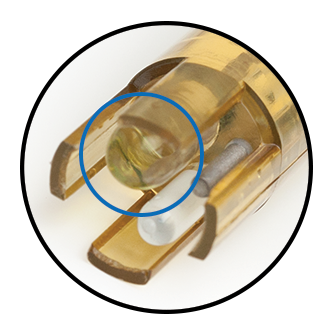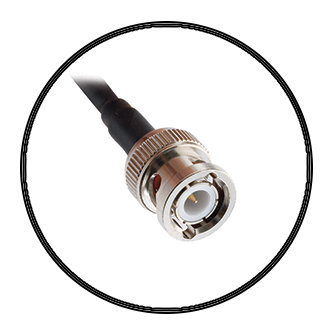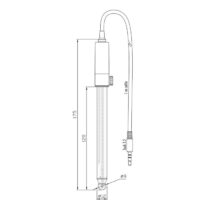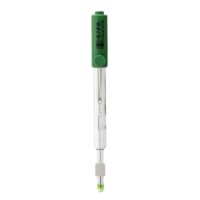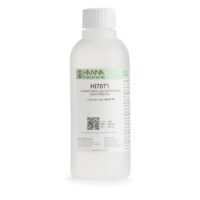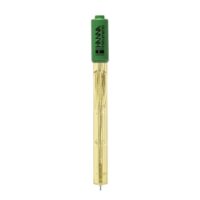Hanna Instruments offers a wide variety of pH electrodes that are designed for many different applications. The type of glass used for sensing pH, bulb shape, body material, type of junction, type of reference and electrolyte used are just some of the design considerations.
The HI1230B uses low temperature (LT) glass, spherical bulb, polyetherimide (PEI) body, single ceramic frit, and double junction.
Spherical Bulb
The spherical bulb is for general purpose use. Other tip shapes include conic for penetration and flat tip for surface measurements.
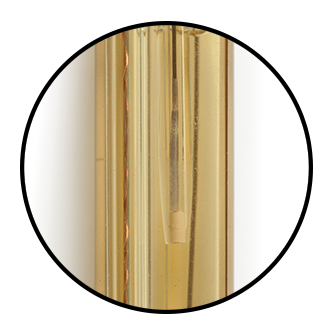
PEI Body
The body of the HI1230B is composed of polyetherimide (PEI) resin. The PEI body is suitable for a wide range of applications and excels in field measurements due to its durability. The shielding around the spherical glass tip minimizes breakage due to accidental bumping or dropping of the electrode. The PEI plastic is a high quality plastic that is chemically resistant to many aggressive chemicals.
Double Junction Reference
A double junction electrode has an internal compartment surrounding the reference wire. Silver ions are present in the electrolyte of the internal compartment, which houses the Ag/AgCl reference wire; the electrolyte outside this compartment is silver free. The double junction design means that virtually no silver from the electrode enters the sample. This design allows measurement in applications where silver ions in the sample are undesirable or silver precipitates on the junction are likely to form.
BNC Connector
The HI1230B uses a BNC connector. This type of connector is universal in that it can be used on any pH meter that has the female BNC probe input. Other type of connectors include DIN, screw type, T-type, and 3.5mm to name a few. These types of connectors tend to be proprietary for a particular type of meter and are not interchangeable.
Single Junction Versus Double Junction pH Electrodes
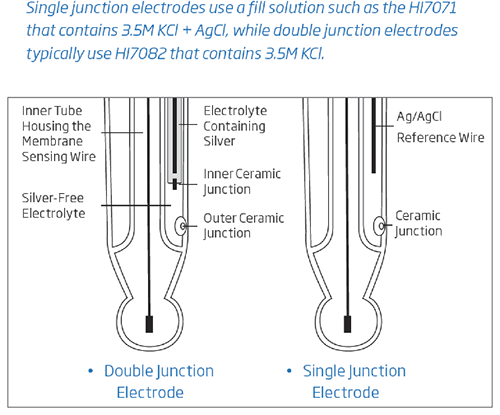
Conventional electrodes are normally single junction. As depicted by the figure above, these electrodes have only a single junction between the internal reference wire and the external solution. Under adverse conditions, such as high pressure, high temperature, highly acidic or alkaline solutions, the positive flow of the electrolyte through the junction is often reversed resulting in the ingress of sample solution into the reference compartment. If this is left unchecked, the reference electrode can become contaminated, leading to complete electrode failure. Another potential problem with single junction electrodes is the clogging of the junction due to silver chloride (AgCl) precipitation. Silver can be easily precipitate in samples that contain Tris buffer or heavy metals. When the electrolyte solution makes contact with the sample, some AgCl will precipitate on the external face of the junction. The result is drifty readings obtained from the sensor.
Hanna’s double junction system, as the name implies, has two junctions, only one of which is in contact with the sample as shown in the figure. Under adverse conditions, the same tendency of sample ingress is evident. However, as the reference electrode system is separated physically from the intermediate electrolyte area, the contamination of the electrode is minimized. The likelihood of clogging of the junction is also reduced with a double junction electrode since the outer reference cell uses a fill solution that is “silver-free”. Since there is no silver present, there is no precipitate that can form to clog the junction.
Purchase & Shipping
All prices are inclusive of GST and not all items are stock items, if you require an immediate solution please send an email to sales@hannainst.com.au or call us on (03) 9769 0666.
Free standard delivery: We offer free delivery within Australia on orders over $150, typically arriving within 5 to 7 days. Delivery times may vary depending on the courier service and the recipient's location. Free shipping is not available with other offers or discounts.
Same-day despatch: Place your order before 1 PM Monday to Friday for same-day despatch (leaves our warehouse). Delivery times may vary depending on the courier service and the recipient's location. Subject to stock availability.
Please note that we do not offer shipping to PO Box addresses.
